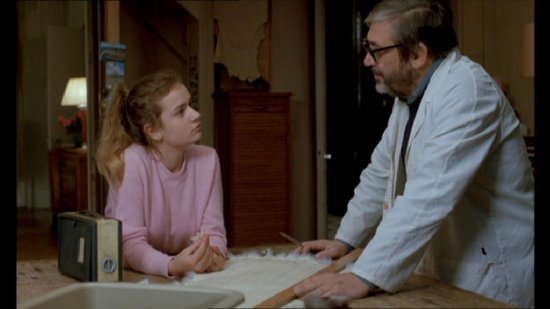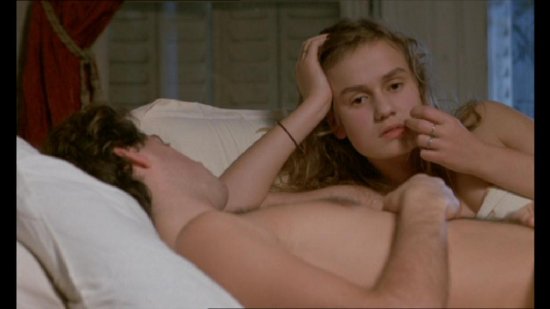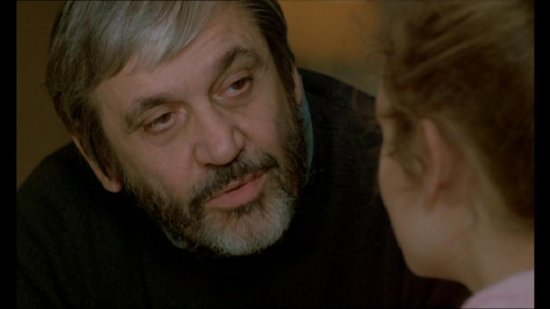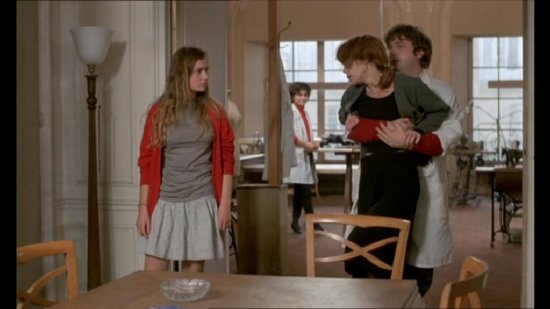À nos amours: The Masters of Cinema Series
À nos amours was the film that introduced the then 16 year old Sandrine Bonnaire to the world and further established Maurice Pialat as one of the foremost filmmakers in France. Having dealt with teenage angst and the plight of young people four years earlier in Passe ton bac d'abord, he turned his attention to what happens to young people when their family unit collapses. Based on the novella by Arlette Langmann, À nos amours follows Suzanne, a restless sixteen year old who doesn't believe in love and tries her hand at acting whilst trying to escape her overbearing father.
In a series of affairs and short-lived relationships, Suzanne seeks the love and attention that she craves from her father but never has and the result is one failed relationship after another, with meaningless sex, where she never seems to be able to properly connect with Luc, a boy her age who loves her.
Her father, a furrier who is always hard at work and short-tempered, loves her but can't express his feelings and, with Maurice Pialat, a man renowned for his authoritarian approach to direction, playing 'Le père', there is a sense that he is really directing the young woman. There are real moments of tenderness between the two, usually born out of improvisation, particularly in the scene where they talk after she comes in late to find him hard at work and they talk more than they have in a long time. In this exchange there is a lovely moment where he mentions that one of her dimples has gone, but doesn't know when, and says that she'll be alright.
The rest of the film is very tough for Suzanne as her father leaves and her overprotective brother beats her, her mother goes through her private correspondence and wardrobe, tearing up and throwing away letters from boyfriends and dresses that she thinks are inappropriate. Suzanne hates home and, with things becoming increasingly volatile and violent, her behaviour becomes even more extreme with even more boyfriends and an attempt to find stability away from the family home.
Pialat has a reputation of being a naturalistic filmmaker, using a great deal of improvisation and employing non-professional actors but, amongst all this, every detail of every shot was meticulously planned and it really shows here. To elicit such a powerful performance from a young woman in her screen debut is the mark of a great director and it is testament to his skill as a filmmaker, actor and human being that he is able to form such a plausible relationship with her.
I have always felt that Pialat's films were to be appreciated rather than enjoyed and this was the first one that I liked as much as I marvelled at the technical ability of the great man. The use of ellipses is impressive as he allows time to flow and you are never sure of how much has elapsed from one scene to another with the film following Suzanne from a confused young actress to a confident woman preparing to fly to San Diego with her fiancé. Within this, there are periods where time passes and it is up to you to guess how long and what has happened to each person; this is a challenge that makes À nos amours such a rewarding watch as nothing is over explained, overwritten and the film is something to be cherished and lends itself to repeated viewings.
The Disc
Extra Features
The Masters of Cinema Series have established themselves as an organisation that knows how to push the boat out when the material is available and to make a package as complete as possible and this is a prime example of this. The first disc contains the film with optional (and excellent) English subtitles, plus the theatrical trailer, a selection of trailers for six Pialat films and sixteen minute interview with Sandrine Bonnaire. This is a remarkably candid and revealing interview, organised as much to do with this film as it is with Pialat's career as he had only recently died.
The second disc contains nearly two hours of supplementary material with an analysis of the film, an interview with Maurice Pialat from the film set and half an hour of screen tests.
The first featurette, entitled L'Oeil humain, is a thorough analysis of À nos amours with former Cahiers du cinéma editorial director Jean-Michel Frodon providing the more academic discussion and actors Jacques Fieschi and Sandrine Bonnaire (and other members of the cast and crew) giving an idea of what it was like to work with Pialat and what they took from the subject matter and experience. This is a worthy addition that will be of particular interest to Pialat scholars and those much more accustomed to his work than me.
Next up is a excerpt from a TV show broadcast in 1983 featuring an interview with Pialat from the set and this is a valuable look at the man whilst he is working and the way in which such a divisive figure was treated by French TV.
Finally, the screen tests show what an accomplished actress Sandrine Bonnaire was at that age and why Pialat was in no doubt to cast her. The other actors featured are either in their featured roles, different roles or didn't make it to the finished film. The AV quality isn't great as this is from VHS in 1983 but it does show Pialat at work and his relationship with actors and how he instructed them.
Also included is 48 page booklet which contains a lengthy essay on the film by writer and filmmaker Dan Sallitt which is an authoritative and very well written piece. There is also a translated conversation between Maurice Pialat and Jean-Luc Godard. As usual the booklet is an excellent addition to the other extras.
The Picture
Presented in its OAR of 1.66:1, À nos amours looks extremely good with grain, scratches and other detritus kept to a bare minimum and the picture looks like it has been restored. Colours are either very bright or very muted depending on where you are and the mood at the time but the level of detail and clarity are very high throughout.
The Sound
The Dolby Digital 2.0 mono French soundtrack is clear and crisp so the dialogue is easy to make out for the Francophones out there. It has an unmistakably documentary feel at times and the soundtrack helps to emphasise the naturalistic feel with the dialogue flowing naturally.
Final Thoughts
Maurice Pialat is considered one of the greatest French directors of the post-war period and his name is mentioned in the same breath as the likes of Godard, Truffaut and Renoir due to films like this. À nos amours is a terrific cinematic achievement with one of the finest acting debuts I've ever seen - Sandrine Bonnaire lights up the screen and gives a performance belying her age and lack of experience - The Masters of Cinema Series have really gone out of their way to give this the treatment it deserves.





Your Opinions and Comments
Be the first to post a comment!